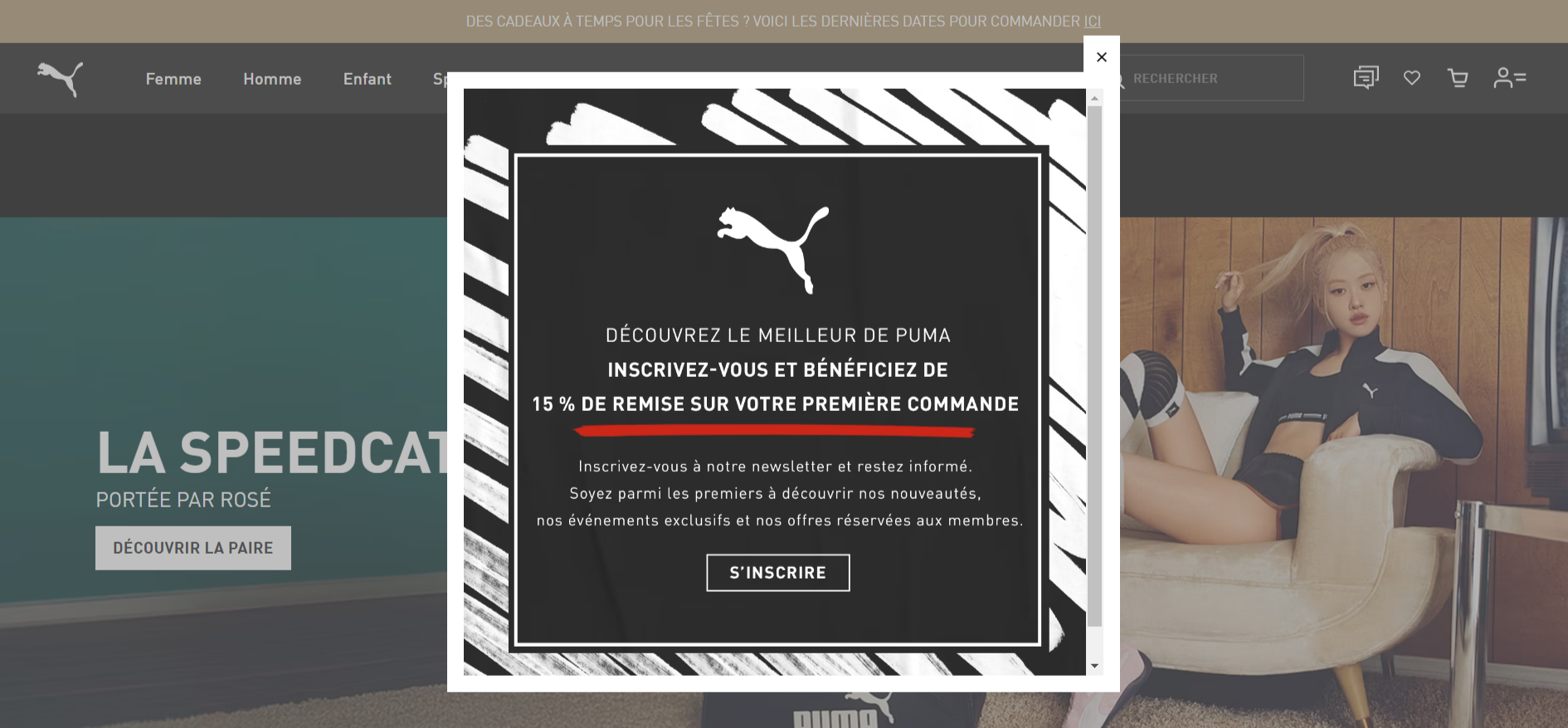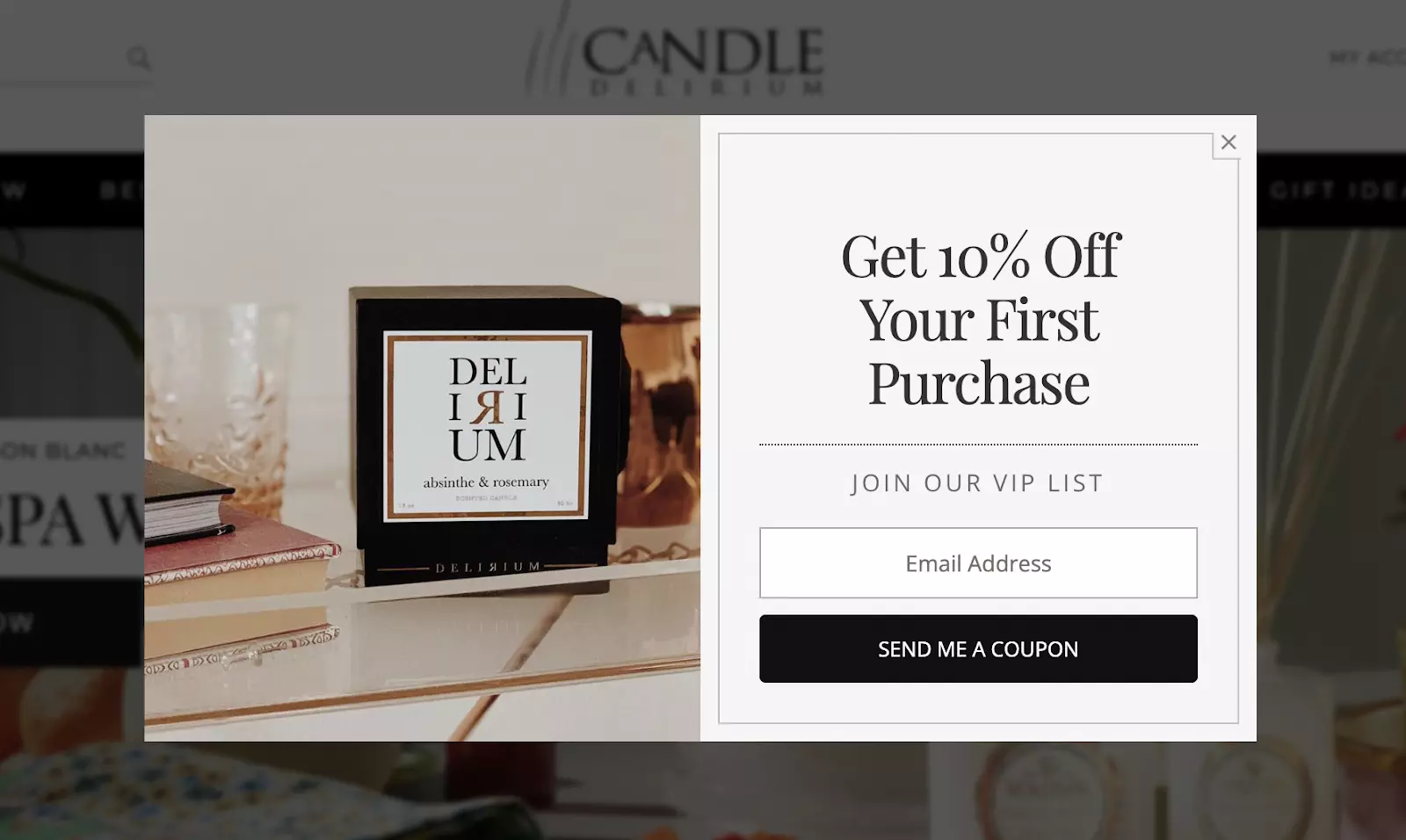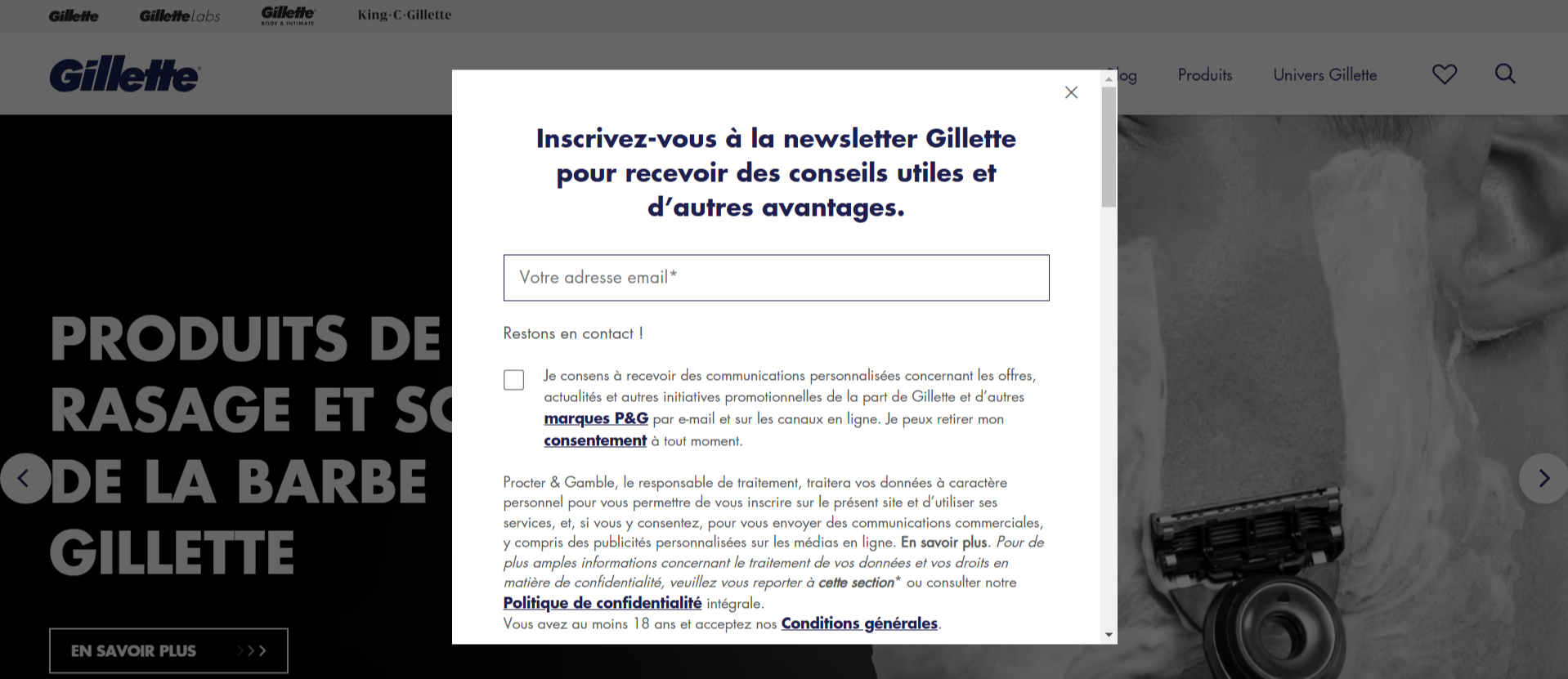
Pop-ups can affect your SEO? Here’s what you need to know
Are pop-ups an essential tool for boosting your conversions or an obstacle that could harm your SEO? Although effective in capturing the attention of visitors, they can damage user experience and lead to penalties from Google if not used correctly. So, how can you leverage pop-ups while maintaining your ranking in search results? In this article, discover everything you need to know to optimize your pop-ups without compromising your SEO!
1. Commonly Used Types of Pop-ups
Pop-ups are versatile tools that come in various forms to meet different objectives. Understanding their types helps you choose the one that best fits your strategy without damaging user experience.

Welcome Pop-ups
These pop-ups appear immediately after a user arrives on your site. Their main goal is to capture attention within the first few seconds, often with an offer, a promo code, or an invitation to subscribe to a newsletter. For example, an online store might offer “10% off your first order” to encourage quick conversions.
Exit Intent Pop-ups
These pop-ups display when a user is about to leave a page, detected by mouse movement toward the close button. They aim to capture leads or prevent abandonment by offering an irresistible deal or a quick survey. For instance, a site might show: “Wait! Enjoy 15% off before you go!”
Timed Pop-ups
These pop-ups are triggered after a set period, once the user is already engaged on the page. They are ideal for avoiding immediate interruption and often appear with contextual messages, such as signing up for a webinar after partially reading an article.
Finally, let’s mention some additional variants:
- Floating Banners: discreet pop-ups at the bottom or sides of the page.
- Full-Screen Forms: cover the entire page to maximize impact.
2. The Impact of Pop-ups on User Experience
Pop-ups, while powerful for capturing attention, have a direct impact on user experience (UX). Their usage can be a double-edged sword, depending on their design and relevance.

Positive Effects: Increased Engagement and Conversions
When used well, pop-ups can improve conversions. For example, studies show that carefully designed pop-ups generate an average conversion rate of 3.09%, and can reach up to 9.28% for well-targeted campaigns. A common example is a pop-up offering a discount code in exchange for signing up for a newsletter. This encourages users to stay longer on the site and increases their engagement.
However, let’s also look at the challenges associated with their use.
Negative Effects: Frustration and Page Abandonment
Intrusive pop-ups, such as those that open immediately or block all content, can irritate visitors. Statistics reveal that 70% of users find these interruptions frustrating, often leading to immediate site abandonment. For example, a full-screen pop-up that is hard to close can drive visitors away, increasing the bounce rate and decreasing conversion chances.
3. Pop-ups and SEO: The Direct Link
Pop-ups not only impact user experience, but they also influence your organic search ranking (SEO), particularly through Google’s strict guidelines regarding intrusive interstitials.

How Does Google View Pop-ups?
Google actively penalizes sites that use intrusive pop-ups, particularly on mobile. Since the mobile-first indexing update, the algorithm pays special attention to the readability and accessibility of pages on mobile devices. Pop-ups that block a significant portion of the main content are deemed harmful. For example, a registration pop-up covering the entire screen upon loading can lead to a drop in ranking in search results.
Now let’s look at the types of pop-ups targeted by these guidelines.
Google’s Guidelines on Intrusive Interstitials
Google has set clear rules for determining whether a pop-up is intrusive. Among the examples that are penalized are:
- Interstitials that appear immediately after loading and prevent access to content.
- Windows requesting action before the user has even seen the page.
- Pop-ups that are difficult to close, especially on mobile.
However, some interstitials are accepted, such as those for legal obligations (e.g., cookie consent) or discreet and relevant pop-ups.
Concrete Examples of SEO Penalties
An e-commerce site can lose several positions if it uses disruptive full-screen pop-ups. According to a study by Moz, click-through rates decrease by 20% for pages penalized by Google. This demonstrates the importance of aligning your practices with search engine expectations to maintain your SEO performance.
4. Best Practices for Using Pop-ups Without Harming SEO
Pop-ups can be powerful tools for capturing leads and converting your visitors, but it is essential to design them in a way that respects Google’s guidelines while preserving an optimal user experience.

Make Pop-ups Non-Intrusive
To avoid irritating users and risking an SEO penalty, opt for pop-ups that do not obstruct the main content. For instance, a small window at the bottom of the screen or a discreet banner can be just as effective as a full-screen interstitial while respecting user experience.
Now let’s move on to managing timing and appearance to optimize their effectiveness.
Optimize Appearance and Timing
The timing of when the pop-up appears is crucial. Avoid displaying them as soon as the page loads; prefer a reasonable delay or a trigger based on intent, such as scrolling to 50% or exit intent. Additionally, ensure that the close buttons are visible and accessible, especially on mobile. A well-designed pop-up reduces bounce rates and encourages positive interactions.
Let’s now target the right audiences and pages to maximize conversions.
Target the Right Audiences and Pages
Not all visitors react the same way to pop-ups. Analyze your data to segment your audience and offer relevant deals. For example, an e-commerce site might display a discount pop-up to visitors browsing specific product pages while sparing the informative blog pages where a pop-up might be perceived as intrusive.
Tools and Plugins for Optimized Pop-ups
Tools like OptinMonster, Sumo, or Elementor make it easier to create pop-ups that comply with best practices. They offer options to customize appearance, behavior, and targeting, ensuring a balance between performance and SEO.
Pop-ups can be a powerful lever for your marketing strategy, provided you respect user experience and SEO criteria. By following these best practices and using tools like Poosh, the number one solution for notifications and lead capture, you will maximize your results without compromising your online visibility.